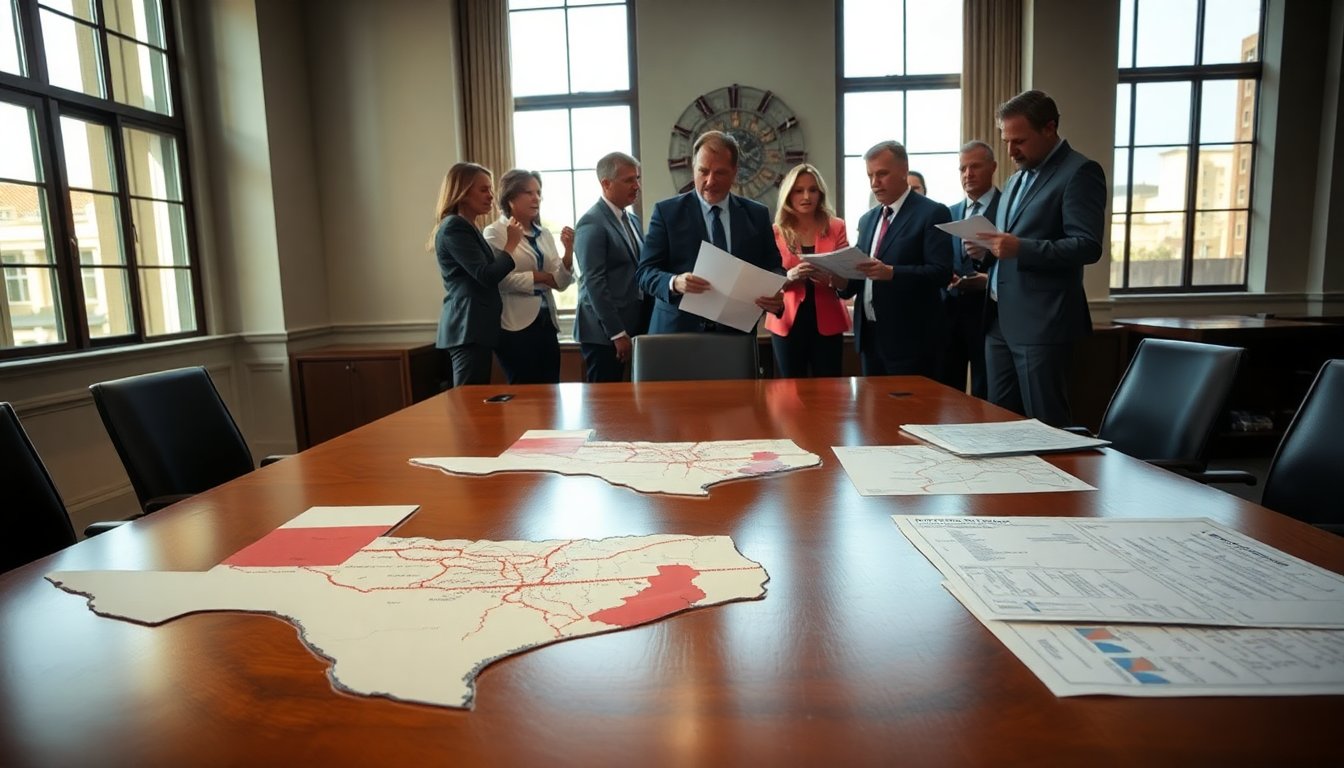Table of Contents
Texas files emergency petition with U.S. Supreme Court
Texas has filed an emergency petition with the U.S. Supreme Court after a federal court blocked the state from implementing its newly drawn congressional map. The judges described the map as racially gerrymandered, raising serious questions about its fairness and integrity.
This ruling arrives at a critical moment as Texas prepares for its congressional primary elections, set for March. The legal challenges surrounding this issue are anticipated to escalate.
Legal background of the redistricting challenge
A federal ruling has ignited a significant petition regarding Texas’s redistricting map. The ruling came from a panel of judges that included U.S. District Judge Jeffrey V. Brown, appointed by former President Trump, and U.S. District Judge David Guaderrama, appointed by former President Obama. They noted that, “The public perception of this case is that it’s about politics. However, substantial evidence indicates that Texas racially gerrymandered the 2025 map.” This statement highlights the judges’ view that the map’s creation involved complex issues of race and representation, extending beyond simple political strategy.
Reactions from state officials
In response to the ruling, Texas Attorney General Ken Paxton announced plans to appeal the decision. He criticized the ruling, asserting that Democrats have a history of partisan redistricting that undermines Republican representation. Paxton stated, “When Republicans act in a similar manner, Democrats resort to unfounded accusations of racism to gain an advantage.” His remarks underscore the intense political climate surrounding the redistricting process.
Implications for Texas and beyond
The Supreme Court’s intervention is viewed as crucial not only for Texas but also as a significant development for redistricting nationwide. The Court has previously blocked lower court decisions regarding redistricting in states like Louisiana and Alabama, indicating a potential trend that may affect the outcome of Texas’s case.
In Texas, a pivotal redrawing of the congressional map took place last summer, supported by former President Donald Trump. The objective was to potentially gain five additional seats for the Republican Party in the forthcoming midterm elections scheduled for 2026. However, this ambitious initiative has encountered obstacles due to ongoing legal challenges.
National context of redistricting efforts
Similar redistricting efforts are unfolding across the United States. States such as Missouri, North Carolina, and Ohio are actively engaged in shaping their electoral maps, while Florida and Kansas are considering similar strategies. Conversely, Democratic-majority states are also evaluating redistricting to mitigate Republican advantages.
Recent developments in California indicate a significant shift, as voters have approved a plan that could potentially undermine Texas’s new congressional map. This decision complicates the national landscape of redistricting.
Implications and upcoming developments
The legal proceedings surrounding Texas’s congressional map reflect broader national tensions regarding representation and the electoral process. As the Supreme Court prepares to review the case, attention turns to how this decision could influence the upcoming elections and the political dynamics in Texas and beyond.
The stakes are high for both political parties. The resolution of this matter is highly anticipated, as it has the potential to impact not only the balance of power in Congress but also the ongoing discourse about race, representation, and electoral fairness in the United States.


